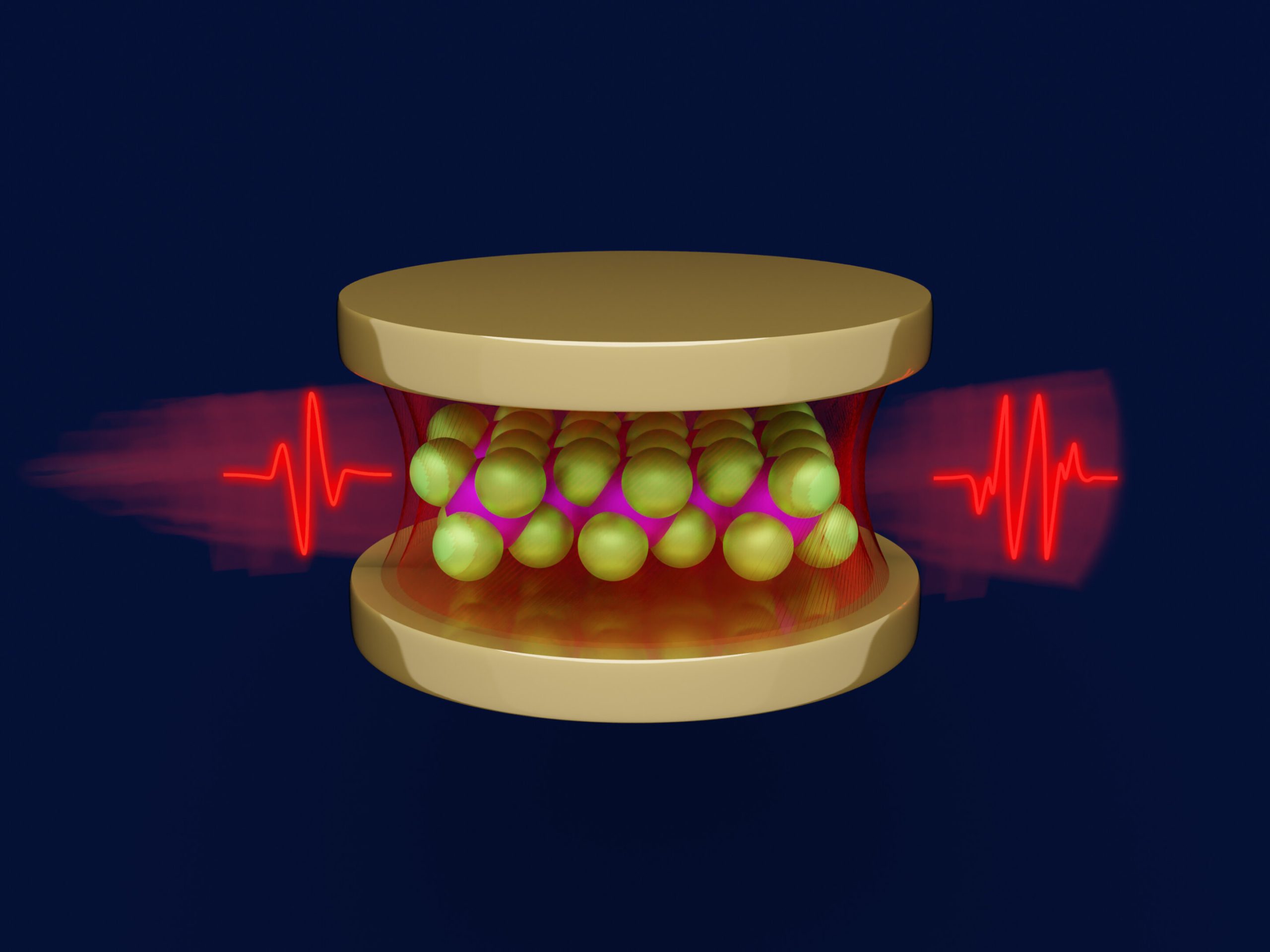Vacuum fluctuations in optical cavities reveal hidden properties of embedded materials
Researchers at the Max Planck Institute for the Structure and Dynamics of Matter (MPSD) have theoretically demonstrated 1 that photons trapped inside an optical cavity carry detailed information about a material placed within it. By measuring the properties of the photons leaking out of the cavity, researchers can probe how an optical cavity modifies the properties of the embedded materials. This insight opens new possibilities for experimental techniques to explore entangled light-matter systems.

According to basic quantum mechanics, empty space is not truly empty—it’s filled with particles that constantly pop in and out of existence, a phenomenon known as vacuum fluctuations. This process is somewhat analogous to atoms at the surface of boiling water, which continually jump in and out of the liquid.
Interestingly, many properties of magnetic and insulating materials are sensitive to these fluctuations. Although the average value of the fluctuations is zero, their variance is finite and can significantly influence material behaviour.
By using high-quality mirrors, scientists can create optical traps—known as optical cavities—that control vacuum fluctuations and, in turn, modify the magnetic or electric properties of a material placed inside. This method offers a powerful new way to control materials in thermal equilibrium, presenting an appealing alternative to traditional techniques that rely on nonequilibrium conditions, such as laser driving.
The modification induced by an optical cavity can be understood as a geometric confinement effect, as photons bounce back and forth between the mirrors and pass through the material over and over. This leads to an effective increase in the coupling between light and matter.
However, measuring what goes on inside the cavity is a major challenge in this type of experiment. Since these structures are very small, with a lateral size on the order of 1 micron, it is very challenging to place a detector inside. As a result, experimentally verifying cavity-induced modifications to materials has remained a longstanding problem.
In the study, researchers from the MPSD propose a way to circumvent this problem by using the cavity-trapped photons to learn about the properties of the embedded matter.
A photon naturally leaks out of the cavity occasionally, carrying with it valuable information about the material. By measuring the properties of these emitted photons, the researchers show it is possible to probe the embedded material and study cavity-induced modifications.
“Because of the interactions between photons and matter, certain properties of the material system are imprinted on the photons,” explains Lukas Grunwald, lead author and doctoral student at the MPSD.
As a proof-of-concept, the team considered the state of a hydrogen model as a function of the magnetic field. As the magnetic field increases, this system transitions from a non-magnetic and entangled state, a so-called “spin singlet state,” to a magnetic state called a “spin triplet” with finite magnetization.
“Surprisingly, we can read off this transition just by looking at the number of photons trapped in the cavity,” says Grunwald.
The researchers also studied a more complex example involving a small cluster of magnetic ions interacting with a cavity. In this case, too, they found that properties of the material are encoded in the photons.
“The possible magnetic states of the material are directly visible in the frequency response of the emitted photons,” says Emil Viñas Boström, co-author and senior postdoctoral researcher at the MPSD. “What’s exciting is that these predictions should be possible to verify using existing optical interferometry measurements.”
More generally, the team hopes that these groundbreaking insights can be used to understand the interaction between materials and cavity photons, and how cavity fluctuations influence the material state.
“We’re only at the beginning of understanding the working principles of these hybrid systems,” says Angel Rubio, Director of the Theory Department at the MPSD.
“Our goal is to use non-classical states of light, to uncover material properties that remain hidden to conventional spectroscopic techniques,” Rubio continues, “and ultimately to better understand how cavity fluctuations can be used to manipulate matter.”
References
- Lukas Grunwald et al (2025) Cavity Spectroscopy for Strongly Correlated Polaritonic Systems Physical Review Letters (2025) doi: 10.1103/1lpw-22np ↩